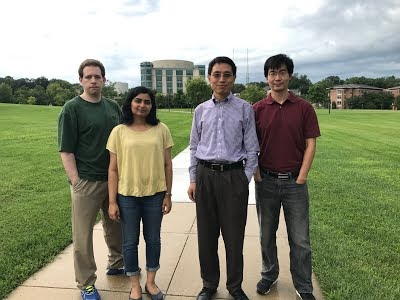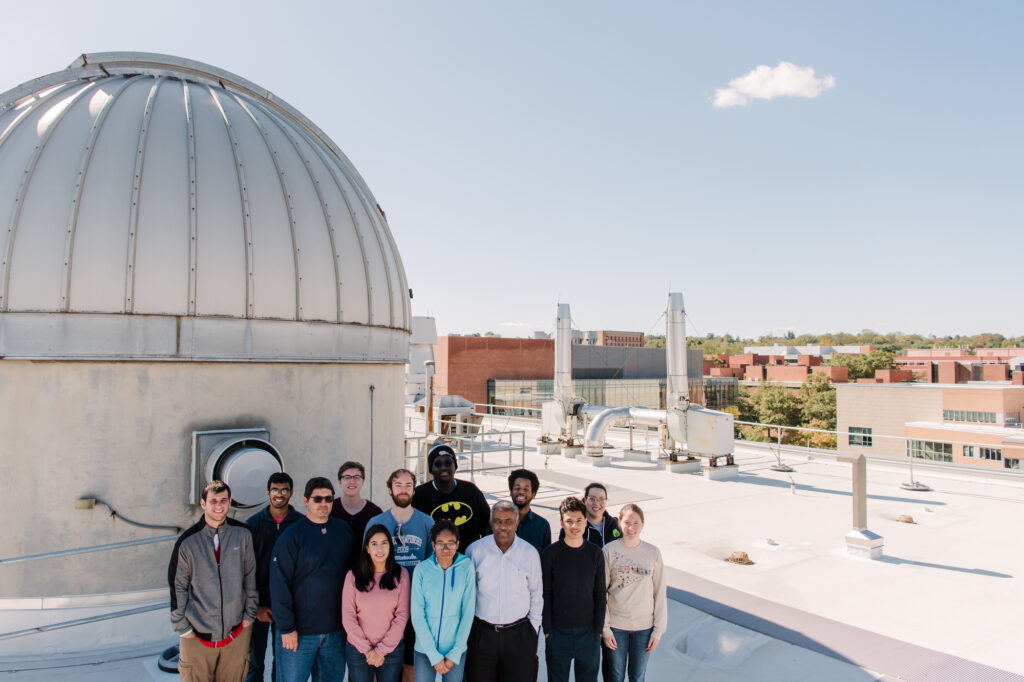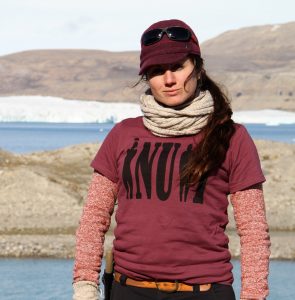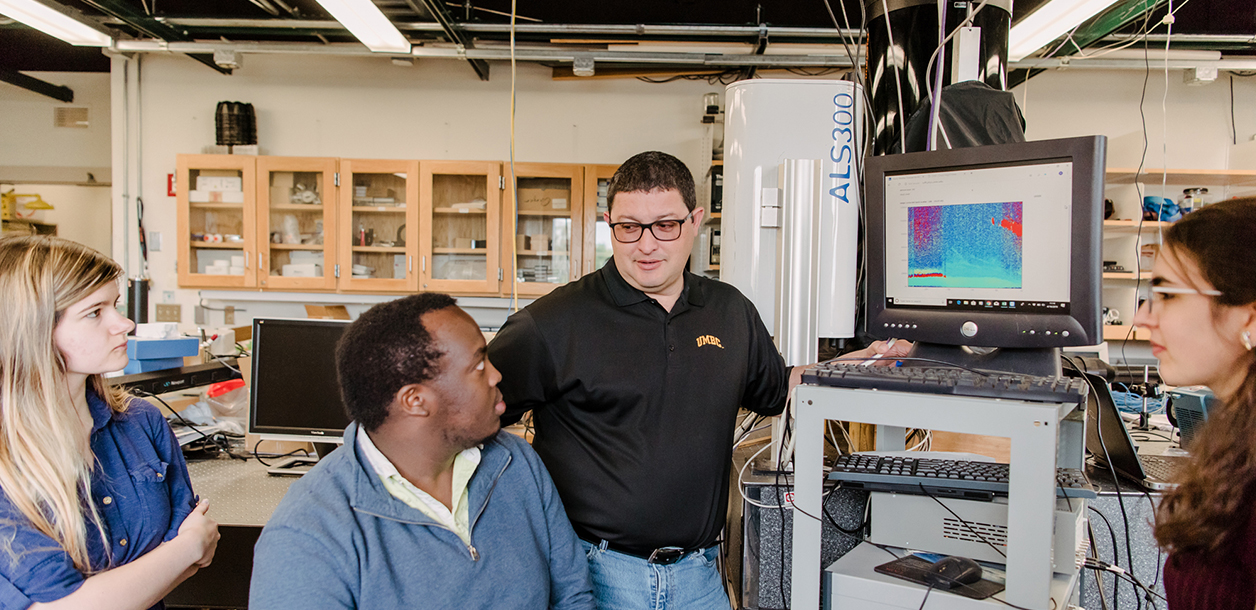Researchers across UMBC are using unique, interdisciplinary approaches to explore global environmental challenges. Here are just three examples.
Lipi Mukherjee, Ph.D. ’20, atmospheric physics, developed an algorithm to identify the abundance and type of particles present just under the surface of the ocean. Her algorithm is 6,000 times faster than previous methods.

“That’s the difference between impossible and doable,” says Mukherjee’s advisor, Pengwang Zhai, assistant professor of physics. Mukherjee trained her model to identify different particle types using neural network technology, rather than relying on existing observational data. This method “has the reliability as well as the speed” today’s scientists need, Mukherjee explains.
The model, which analyzes data collected by orbiting satellites, mostly detects colored dissolved organic matter (CDOMs). Some of these particles can be poisonous to sea life. They can also serve as a proxy for carbon stored in the ocean, which is important to understand in the context of climate change.
Zhai is excited to continue to validate Mukherjee’s model. He’ll also use her model to analyze data coming from three instruments that will launch with NASA’s PACE mission in 2024, including UMBC’s own HARP2.
Mukherjee has moved on to a position at the National Center for Atmospheric Research. She’s applying her knowledge of neural networks to interpret magnetic and thermodynamic properties of the sun’s atmosphere, which can lead to solar flares that interrupt GPS tracking and telecommunication systems. “That’s the beauty of the physics Ph.D.,” Zhai says. “You may not work on the exact same topic after you graduate, but your skill set is highly relevant.”
Answers in the air
Ruben Delgado, assistant research professor at the Joint Center for Earth Systems Technology (JCET), a UMBC partnership with NASA, studies a different resource: our air. Since a major air quality study over Chesapeake Bay in 2011, UMBC has gained national prominence for air quality research. Delgado’s group uses data collected by aircraft, satellites, and ground-based systems to understand where, when, and how much of certain pollutants appear near ground level.
The research led to new regulation that has decreased air pollution in the region. Impressed, the federal Environmental Protection Agency asked UMBC in 2016 to serve as the central hub for a fast-growing network of instruments. Delgado and his students analyze air quality data coming in from sites across the U.S. and Canada.

The instruments at different sites produce raw data that look slightly different. It’s up to the computer science majors on the team to find ways to analyze it all efficiently and then visualize the results in a way that makes sense to the end user.
Some of the students regularly post their findings on a website affectionately known as the “Smog Blog.” During the worst of this fall’s fires in the West, officials from Pennsylvania called to check on the status of blog posts. The governor expected daily updates on how the smoke was affecting local air quality—and their team was relying on the Smog Blog.
“That’s when we give the wake up call to the students: ‘By the way, your work is being used by government officials,’” Delgado says. “Some of them might not have previously thought at all that their coding skills would be useful for environmental research. It’s a point of pride for the students that their work is being used and highlighted.”
Phytoplankton to polar bears
Rather than collecting data at a distance via satellites, Nicole Trenholm spends much of her time on small boats in the Arctic Ocean, exploring everything from ocean currents to algal blooms to microplastics in ice cores. After earning a bachelor’s in geology, research missions to the Arctic with NASA made her want to pursue an advanced degree.
“I was seeing things and making connections, but I was just a data delivery girl at the time,” Trenholm says. “I wanted to go back to school and learn how to lead the science myself.”

Photo courtesy of the Department of Geography and Environmental Systems.
Trenholm has a passion for messy questions about the relationships between melting Arctic glaciers and changes in the surrounding biological communities, from phytoplankton to polar bears. Those interests brought her to UMBC, where she is a Ph.D. student co-advised by geography and environmental systems professor Jeff Halverson and JCET scientist Kevin Turpie.
Trenholm is taking advantage of her fieldwork experience to bridge the gap between climate data collected from afar and ecological data collected on the ground. “I’m doing my best to not go one direction or the other, but really try to stay in between and help solve these crossover questions,” she says.
“Glacier melt isn’t just influencing sea level rise—it’s also influencing the future health of marine ecosystems, fisheries, water quality—all this kind of stuff,” Trenholm adds. “And that’s a story that hasn’t been fully investigated at this point.”
On her next research cruise, she’ll be the only graduate student aboard with a group of senior researchers exploring currents in the Beaufort Sea north of Alaska. The trip will be exciting and educational, but it doesn’t come without risk.
“This is going to be one of the nastier times of year to be up in the oceans,” Trenholm says. “We’ll be out there fighting the seas, collecting data. I’ll be wearing a hard hat and be soaking wet most of the time.”
But she’ll be doing important work, gathering information to help scientists better understand our changing world. And, in the true spirit of a committed scientist, she continues, “It’ll be fun. I brought some audio books and my ukulele.”
*****
Learn more about Retrievers’ roles in researching climate change in the Arctic in this fall 2020 feature On Thin Ice.
Header imager: Delgado, standing, works with students in his lab in 2019. Photo by Marlayna Demond ’11.
Tags: CNMS, Fall 2020, GES, Physics, professorsnottomiss

